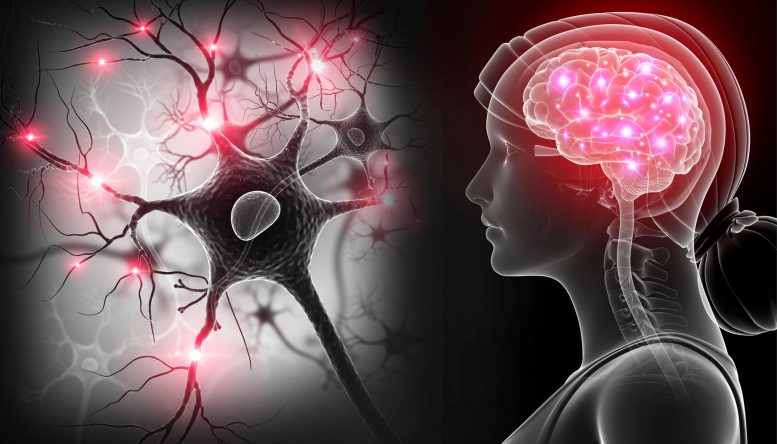
A new study of Alzheimer’s disease combines multiple biomarkers to uncover new genetic pathways and sex-specific differences, paving the way for improved early diagnosis and understanding of Alzheimer’s.
Dementia, encompassing conditions like Alzheimer’s disease, impacts approximately 1.8 million individuals in Germany. The precise origins of this disease are still not fully understood, though it’s acknowledged that genetics are a major contributor to its development. Historically, most research efforts to discover new genes associated with Alzheimer’s have employed a methodology known as “case-control design.”
“With this conventional and highly simplistic analysis strategy, a vast amount of clinical information is lost that can be valuable for elucidating new disease mechanisms,” says Prof. Dr. Lars Bertram, head of the Lübeck Interdisciplinary Platform for Genome Analysis at the University of Lübeck and project leader of the now published study. “In our latest investigation of almost 1,000 individuals, we therefore combined the data from six different Alzheimer’s biomarkers and were thus able to map the disease pattern much more accurately in the subsequent genetic analyses.”
One of the findings suggests a reduced expression of GRIN2D, a receptor of the brain messenger glutamate, in Alzheimer’s disease and other neuropsychiatric disorders. “This probably leads to an impairment of the function of the synapses, i.e. the connections by which nerve cells in the brain communicate with each other,” says Bertram.
Genetic Pathways and Gender Differences in Alzheimer’s
By combining the Alzheimer’s biomarkers, it was possible to carry out additional downstream analyses that would not have been possible using a conventional study design.
“In this context, we would like to highlight so called mediation analyses, a statistical method to uncover a possible causal involvement of the investigated biomarkers in the disease,” explains Dr. Alexander Neumann from the Erasmus University Medical Center in Rotterdam, and lead author of the study. “These analyses suggest that there are at least two main pathways involved in Alzheimer’s disease.”
The research team found that one pathway acts through the effects of so-called amyloid and tau proteins, which has been known for a long time and is mediated by the Alzheimer’s risk gene APOE, which has been known for decades. The second important pathway is largely based on the reaction of the immune system, which is caused, among other factors, by the effects of the genes TMEM106B and CHI3L1, which play a role in the transport of cellular components and the regulation of inflammatory responses.
Moreover, the analysis of the X chromosome (which determines the biological sex) as well as genome-wide analyses stratified by sex provided new insights into the previously unexplained difference in the frequency of Alzheimer’s disease between men and women.
“The results of this part of the study show that certain genes lead to measurable effects in relation to Alzheimer’s biomarkers only in men or only in women,” says Dr. Olena Ohlei from the Lübeck Interdisciplinary Platform for Genome Analytics and second first author of the study. “Some findings even suggest opposite effects in men compared to women, i.e. that certain genes increase the risk of Alzheimer’s disease in women but decrease it in men, or vice versa.”
Further studies are needed to find an explanation for this.
Advancing Alzheimer’s Understanding and Diagnosis
Overall, the published work shows new ways to help to better understand the causes of Alzheimer’s disease. ” Ideally, it shows that the method of multivariate, i.e. combined analysis of biomarkers, which we used for the first time, can also improve the diagnosis of Alzheimer’s disease or may even allow it to be diagnosed at an earlier stage,” Bertram summarises the findings. “For this, however, our results must first be validated in independent samples, as is common in science.”
Reference: “Multivariate GWAS of Alzheimer’s disease CSF biomarker profiles implies GRIN2D in synaptic functioning” by Alexander Neumann, Olena Ohlei, Fahri Küçükali, Isabelle J. Bos, Jigyasha Timsina, Stephanie Vos, Dmitry Prokopenko, Betty M. Tijms, Ulf Andreasson, Kaj Blennow, Rik Vandenberghe, Philip Scheltens, Charlotte E. Teunissen, Sebastiaan Engelborghs, Giovanni B. Frisoni, Oliver Blin, Jill C. Richardson, Régis Bordet, Alberto Lleó, Daniel Alcolea, Julius Popp, Thomas W. Marsh, Priyanka Gorijala, Christopher Clark, Gwendoline Peyratout, Pablo Martinez-Lage, Mikel Tainta, Richard J. B. Dobson, Cristina Legido-Quigley, Christine Van Broeckhoven, Rudolph E. Tanzi, Mara ten Kate, Christina M. Lill, Frederik Barkhof, Carlos Cruchaga, Simon Lovestone, Johannes Streffer, Henrik Zetterberg, Pieter Jelle Visser, Kristel Sleegers, Lars Bertram and EMIF-AD & ADNI study group, 4 October 2023, Genome Medicine.
DOI: 10.1186/s13073-023-01233-z
The study was funded by the European Research Council.









Women have higher prevalence of autoimmune diseases so that’s one factor to consider. If the immune system (or some unresearched problem) is attacking the neurons I mean that would definitely be a problem. Women have much higher levels of stress than men do I think environmental factors are a lot larger of an issue than genetic ones. Environmental factors can lead to epigenetic changes which might change the configuration of the proteins due to transcript isoforms. Error rates are also likely to increase with stress as pH levels are thrown off leading to eventual apoptosis.